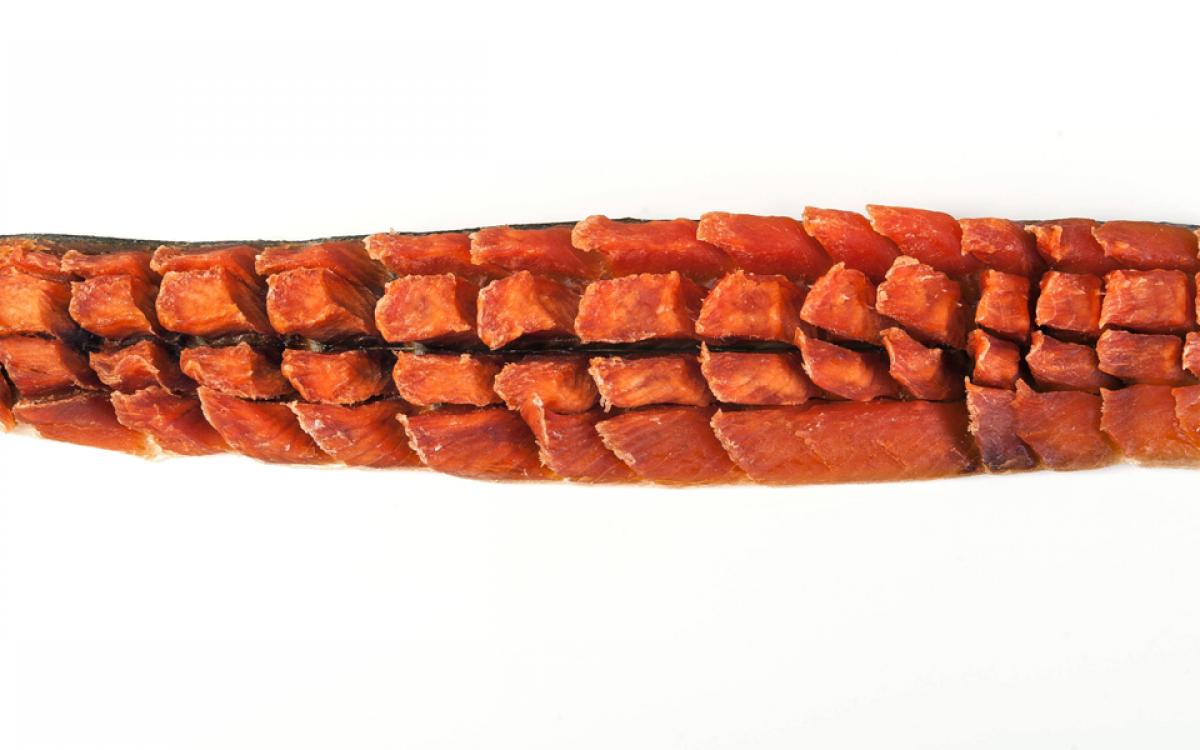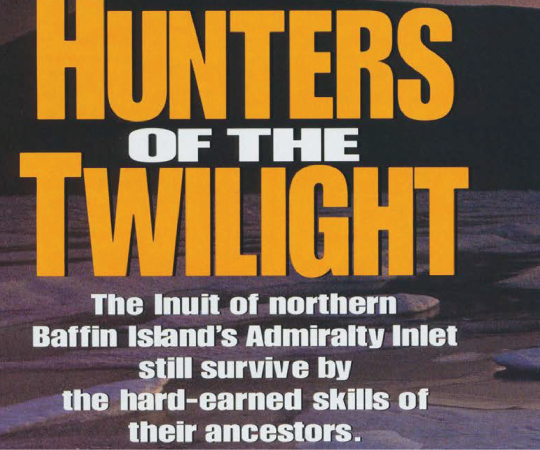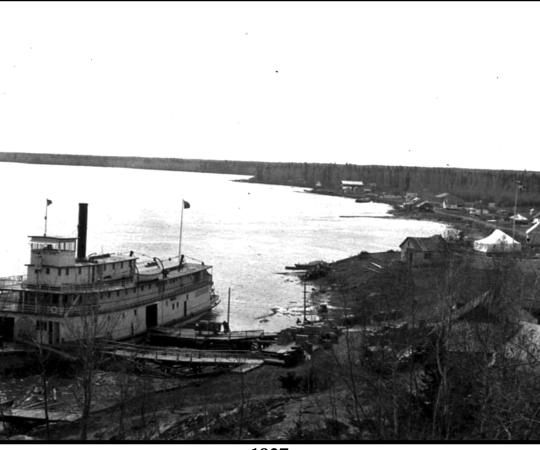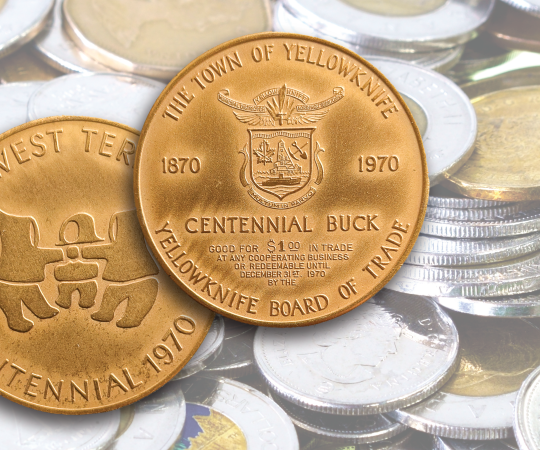Every morning the Inuit would bring the rock-frozen fish inside to thaw, a woman pinching the flesh every so often until it softened, leaving the imprint of her finger.
Heads and tails were cut off and saved for the children. The Inuit women then cut the skin along the fishes’ bellies and backs and peeled it back with their teeth. Breakfast was served.
The Inuit then gnawed on the fish “as an American does corn on the cob,” explorer and ethnologist Vilhjalmur Stefansson recounted in Harper’s Monthly Magazine in 1935. Soon he would too.
In 1906 Stefansson quit his instructing job at Harvard University to join an Arctic expedition, but he missed the boat. Literally. The whaling ship, on which he was to meet up with his fellow adventurers near Herschel Island, never came. Stranded in the Western Arctic with nothing else to do, he decided then and there to live “as an Eskimo” and learn everything he could from them.
Over the next 12 years, Stefansson travelled across the Arctic, living with various Inuit groups. He discovered mysterious “blond Eskimos” in the Coronation Gulf, and put some of the world’s last major landmasses on the map. But his most profound discoveries were gastrointestinal rather than terrestrial.
“It is the most healthful sort of life and food, and a most attractive sort of occupation to me, mentally and physically, and I am in better condition than when I am here [in society].”
Born in Gimli, Manitoba to Icelandic parents in 1879, Stefansson was raised on a European diet of cereal grains, fruits, vegetables and lean meats. Prevailing wisdom was—and is, if you look at the Canada Food Guide—that you needed all these elements to be healthy.And at the time, it was thought that too much meat would cause rheumatism and heart problems.
By 1906 whaling ships had stopped coming to the Western Arctic, and the Mackenzie Delta Inuit with whom Stefansson had shacked up no longer supplemented their diet with traded goods like flour, tea and spices. Like it had been for thousands of years before, their diet was once again meat, fat and water.
It says something about Stefansson’s character that he believed he could survive on that and go against the established regime of his fellow white men. Stefansson also admitted he had a strong dislike of fish from childhood and refused to eat it at first. But early on in his stay with the Inuit, Stefansson found himself growing weak. Each day he would venture inland in the hopes of catching a caribou, only to return exhausted and hungry.
“Gradually and almost without noticing it, I began to eat more and more of the fish, until at the end of ten days or so I was eating square meals,” Stefansson wrote in Hunters of the Great North.
Stefansson learned to enjoy other foods he was initially repulsed by—like fish heads, caribou heads, seal, and whale. Instead of bringing “grocery” food with him, Stefansson lived off the land. At Langton Bay, east of the Mackenzie River, he had the choice of eating his stores of groceries, or feasting on a two-year old whale carcass that had been thawed two summers and frozen two winters “and was therefore not so palatable as it had been the year before,” Stefansson wrote My Life With The Eskimo. “By this I do not mean to say that it was unfit for food. We did, as a matter of fact, cut up some of it to eat, and that by choice rather than through necessity.”
As Stefansson’s Northern palate upgraded, so too did his health. Before a royal commission in Ottawa in 1919, Stefansson testified that, “It is the most healthful sort of life and food, and a most attractive sort of occupation to me, mentally and physically, and I am in better condition than when I am here [in society].”
Some of the ideals of the Inuit’s all-meat diet have been adapted into popular diets like Atkin’s, Ketogenic or Paleo, which decrease or eliminate carbohydrates and drastically increase the amounts of fat and protein the dieter eats—under the premise that it is sugars, and not fats, that contribute most to obesity and related health issues.
Stefansson published dozens of books and hundreds of articles on his travels, and railed against the Western idea that meat and fats were unhealthy—and that you needed vegetables to get nutrients like vitamin C and D. But his advice was little heeded. There is still a widespread fear of animal fats in society, and a strong belief that vegetables and cereal grains are a crucial part of our diet. Or maybe, it’s just that most of us can’t stomach the idea of eating a frozen fish like a corn on the cob.










